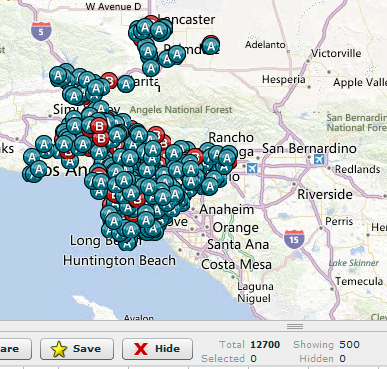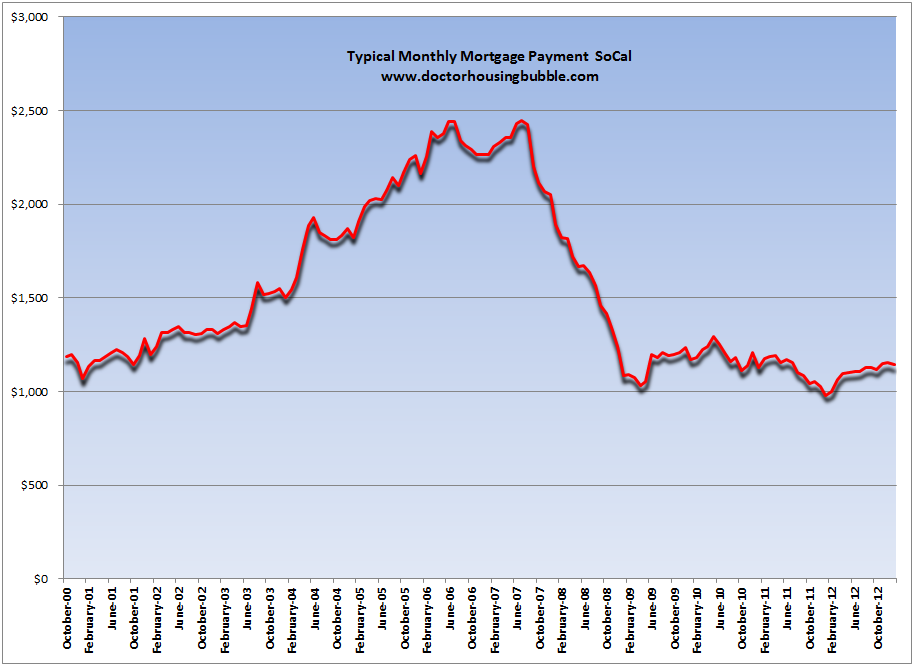JT Long of
The Gold Report (3/4/13)
Some people may look at the stock market and see economic recovery.
Eric Sprott of Sprott Asset Management and Sprott Money looks at myriad
other economic indicators and sees an economy still in decline. Despite
his suspicions that central banks are keeping gold prices artificially
low, he tells
The Gold Report that he favors gold, platinum, palladium and especially silver, over the near and long term.
The Gold Report: The price of gold has dipped under
$1,600/ounce ($1,600/oz); silver is below $30/oz. Is this a case of
living by the sword and dying by the sword, where precious metals prices
only go up in a bad economy and are doomed to languish when things go
well?
Eric Sprott: That is an interesting question because I do not
know what it means to go well these days. I see things going from bad to
worse economically, and so do many others. Walmart just announced that
January 2013 was a lousy month and its start to February was its worst
in years. Apple’s iPhone manufacturer Foxconn just announced a hiring
freeze in China because of a decline in iPhone production. Italian
industrial production new orders were down 15%. You can feel the
recessionary malaise setting in.
Weakness begets weakness, and there are only two ways to stop weakness: fiscal policy and monetary policy.
No one has any room for aggressive fiscal policy anymore. The U.S. is
looking at sequestration. We just had a 2% tax increase. There is
nothing left in the cupboard for fiscal stimulation. On the monetary
side, we are at 0% interest rates, and we are printing money nonstop.
We are entering a period of steady decline in economic well-being,
notwithstanding the suggestions of central planners that H2/13 will be
great. They always say the second half will be great because they know
the first half will not be.
TGR: In your opinion, what are the most important indicators of what is really happening in the economy?
ES: There are many indicators: rail car loadings, car sales, personal income, consumer sentiment, to name a few.
Granted, most of the consumer sentiment numbers have been OK, but a
lot of those numbers follow in line with the stock market. Anyone who
thinks that 70% of the population is better off has to be mistaken. The
2% increase in withholdings on someone’s salary implies a much bigger
impact on his or her discretionary spending because a lot of spending is
dedicated to things that do not change: mortgage payments, insurance
costs, the cable bill. When you knock 2% off the top, it could affect
discretionary spending by 4–5%.
The one indicator you do not want to watch is the stock market
because it is part of the financial fabric that the central planners are
desperately trying to hold together. Not a week goes by without a
crisis. Four weeks ago, it was Banco Monte dei Paschi. Three weeks ago,
the third largest bank in the Netherlands had to be bailed out. Last
week, Peugeot had to get a loan from the European Central Bank. Now the
largest homebuilder in Spain has declared bankruptcy.
TGR: Which takes us back to the first question: If there is no
recovery and the economy is still languishing, why did gold and silver
both drop last week?
ES: This will sound like a conspiracy theory, but unusual things are happening in the gold and silver markets.
For example, on Feb. 19, nearly an entire year’s supply of gold
traded on the Comex in a single day. The same volume of silver trading
happened on the commodities exchange. You and I both know that the
people selling that much metal cannot deliver it because it is just not
available. Yet somehow they are out there, pounding down these contracts
and keeping the price suppressed.
I would hypothesize that the central bankers know their policy of
printing money is the most irresponsible thing imaginable, and they are
suppressing gold and silver prices to hide their irresponsibility. When
one is printing that much money, gold and silver prices are the first
things you would expect to rise. If we saw gold going to $2,000/oz, the
price of oil would probably go to a new high and the price of
agricultural commodities would go up. Then you would have a huge
inflation problem on your hands.
Based on my research, I believe the Western central banks have been
surreptitiously supplying gold to the market. I say this because the
demands I see for physical gold are way beyond the supply of gold. The
annual gold supply has not changed in 12 years, and demand just keeps
increasing from China, India, the U.S. Mint and silver and gold coin
sales; even the non-Western central banks are buying gold. Where is this
gold coming from? I think the Western central banks are selling gold to
keep the lid on the price so everyone thinks their monetary policies
are benign. Nothing could be farther from the truth.
TGR: But wasn’t Feb. 15′s volume blamed in part on reports of a
few large fund managers selling their gold exchange-traded funds
(ETFs).
ES: That may very well have happened. A lot of these paper
things trade together, and the gold in the ETFs is paper gold at best. I
have serious reservations about whether there is actual physical gold
in the gold ETFs.
When I see China buying 95 tons of gold in a month and I know that
the world’s monthly production is only 180 tons, that represents half
the gold. India bought 100 tons in January, more than 50% of the gold
supply. Between China and India, they bought 100% of the available gold.
So, where did the gold bought by the rest of the world come from? From
the Western central banks, as far as I’m concerned.
TGR: Does this policy of suppressing the price of precious
metals hold for silver, platinum and palladium as well and how is it
affecting supply and demand in those metals?
ES: The monetary authorities have never really focused on
platinum and palladium because they are more industrial metals and very
few people watch their prices. We watch them now because we have a
public platinum and palladium trust.
The platinum price has gone up and the paper markets are starting to
get involved. I suspect that is because there are shortages of platinum
and palladium. If their prices skyrocket, it might kick over into silver
and gold. There are people willing to sell contracts for platinum and
palladium, even though there will be shortages of both this year. It
seems ridiculous to be shorting platinum and palladium, but these
misplaced bets were probably placed for a reason: they do not want
metals to look as if they could knock the cover off the ball and reveal
what the real money printing has caused.
TGR: But would you not expect platinum and palladium to track
with the economy and go up in a recovery, while gold would not do as
well?
ES: Gold is more of an investment vehicle. About 90% of all
gold produced each year is used for investment. And, yes, a lot of
platinum and palladium are used for industrial purposes. The same is
true of silver. When there is not very much available for investment,
the investment demand for silver, platinum and palladium will make the
difference.
In my view of the economy, industrial demand might decrease. But if
that happens, we would go right back to the unresolved problem of all
this outstanding debt. In a weak economy, people start questioning the
value of the credits of the outstanding loans. We go back into the same
banking crisis that we had in 2008, in which the banks would have failed
had the government not stepped in. Now, government intervention is a
regular occurrence.
TGR: You invest in equities and physical metals through your
various funds and trusts. What do you consider to be a balanced
portfolio in today’s world?
ES: You must have, at a minimum, 10% in gold and silver. I
probably have 80% of my money in gold and silver. For my funds, I have
80% in gold and silver and equities.
Did you know that gold and gold shares represent 1% of all financial
assets today? Some very mainstream people have come out in favor of gold
recently: Bill Gross at PIMCO, Ray Dalio at Bridgewater Associates and
Ned Davis Research, for example.
TGR: How do you adjust your portfolio based on what is happening in the world?
ES: I do not adjust my portfolio. I take a long-term view of
gold and silver. When I first got in the gold and silver markets, I
could see that there should be a supply shortage. I never dreamed of the
tailwinds provided by money printing and bank runs.
Your readers should ask themselves if, in a weakened economy, they
would rather own a U.S. bond that yields 2%, a stock trading at a
multiple of 15 or gold and silver, which are in bull markets already and
undoubtedly will be up at the end of the year? The answer should be
obvious.
TGR: What balance do you strike between the physical metal, the junior companies and the producing gold and silver companies?
ES: Our funds probably own one-third of their precious metal
assets in physical bullion. Of course, we have $5 billion ($5B) in funds
dedicated 100% to physical assets.
In the funds I manage, I am about one-third physical, one-third gold
equities and one-third silver equities. Silver equity is way
overweighted because the number of silver equities available is very
small.
I think silver will outperform gold this year and for the next 10
years. I think silver should trade at a 16 to 1 ratio to gold; in other
words, if gold is $1,600/oz, silver should be $100/oz; if gold goes up
to $3,200/oz, silver should go to $200/oz. I am way more inclined to be
involved in the silver space than the gold space, but I am involved in
all of it, and that is what I would recommend.
However, people can make their own risk assessments. The risk in the
gold equities is that they are leveraged to the gold price at least 2:1,
if not 3:1. If gold goes up 10%, the equities go up 30%, and vice
versa. Gold is a riskier bet, but if you believe in the thesis of gold
going higher, it is a bet that has to win given the passage of time.
Precious metals investors are not going to win the game in the paper
market. We have to win it in the physical market. More and more people
are taking delivery of their physical gold.
TGR: This was supposed to be silver’s decade. Why is it still below $30/oz?
ES: Silver has had a good run. I think it started the decade
at $20/oz, reached $50/oz and is now at $29/oz. A lot of money can and
will be printed in the next seven years. There is lots of time for
physical silver to prove that it was the investment of the decade.
TGR: Why is it so important where physical bullion is stored?
ES: There are examples of people thinking they owned gold when
they did not. For example, when MF Global went down, people could not
get possession of their gold. In the case of the SPDR Gold Trust
(GLD:NYSE) and the iShares Silver Trust (SLV:NYSE), we know they are
short sellers. Therefore, there is no silver there for the person who
bought it from the short sale.
If a fund’s physical assets are being stored with a financial
counterparty that goes broke, the gold and silver will not be available.
People should reduce their risk by buying it from a bullion dealer and
either taking physical delivery or knowing where it is on deposit.
You want to own and store physical metal assets yourself or know that
you have access to them. Our trusts, for example, are all redeemable in
gold, silver, platinum and palladium. That requires investing in larger
amounts. I think you have to buy a 400-oz gold bar, which puts it out
of most people’s reach. But you can rest assured the gold is there.
TGR: What final piece of advice would you leave our readers with today?
ES: Be very wary of what we are being told about a recovery.
We were told there would be a big recovery in 2012; there was none. Now
we are being told about a nice second half recovery, because there has
been no recovery in the first half. There probably will not be a
recovery in the second half either.
On Jan. 17 the Treasury Department reported its Generally Accepted
Accounting Principles (GAAP)-based budget deficit for 2013. It reported a
$1.2 trillion ($1.2T) cash deficit, which is a measure of the change in
the present value of future liabilities, such as Social Security,
Medicare and Medicaid payments, and civil service pension plans, that
the government must pay. In 2011, the total deficit was $5T. In 2012, it
was $6.9T. Yet, Congress is haggling over how to save $100B. This is a
$16T economy.
You cannot like bonds. It is difficult to like stocks in this
environment. Instead, stick with the precious metals; sooner or later,
we will win the physical war, and the prices will react accordingly.
TGR: Thank you for taking the time to share your time and insights, Eric.
Click
here to read
The Gold Report’s transcript of the Sprott Precious Metals Round Table webcast with Eric Sprott, John Embry and Rick Rule.
Learn more about Sprott Money’s storage service
here.
Eric Sprott
has over 40 years of experience in the investment industry. In 1981, he
founded Sprott Securities (now called Cormark Securities Inc.), which
today is one of Canada’s largest independently owned securities firms.
After establishing Sprott Asset Management Inc. in December 2001 as a
separate entity, Sprott divested his entire ownership of Sprott
Securities to its employees. Sprott’s predictions on the state of the
North American financial markets have been captured throughout the last
several years in an investment strategy article that he authors titled
“Markets At A Glance.” Sprott has been widely recognized for his
strategic insights and his accurate market predictions over the
years.His newest ventures are Sprott Money Ltd., one of Canada’s largest
owners of gold and silver bullion, and the recently launched Sprott
Physical Platinum and Palladium Trust.
Want to read more
Gold Report interviews like this?
Sign up
for our free e-newsletter, and you’ll learn when new articles have been
published. To see a list of recent interviews with industry analysts
and commentators, visit our
Streetwise Interviews page.
DISCLOSURE:
1) JT Long conducted this interview for
The Gold Report and provides services to
The Gold Report
as an employee or as an independent contractor. She or her family own
shares of the following companies mentioned in this interview: None.
2) The following companies mentioned in the interview are sponsors of
The Gold Report: None. Streetwise Reports does not accept stock in exchange for its services or as sponsorship payment.
3) Eric Sprott: I was not paid by Streetwise Reports for
participating in this interview. Comments and opinions expressed are my
own comments and opinions. I had the opportunity to review the interview
for accuracy as of the date of the interview and am responsible for the
content of the interview.
4) Interviews are edited for clarity. Streetwise Reports does not
make editorial comments or change experts’ statements without their
consent.
5) The interview does not constitute investment advice. Each reader
is encouraged to consult with his or her individual financial
professional and any action a reader takes as a result of information
presented here is his or her own responsibility. By opening this page,
each reader accepts and agrees to Streetwise Reports’ terms of use and
full legal disclaimer.
6) From time to time, Streetwise Reports LLC and its directors,
officers, employees or members of their families, as well as persons
interviewed for articles and interviews on the site, may have a long or
short position in securities mentioned and may make purchases and/or
sales of those securities in the open market or otherwise.
Streetwise –
The Gold Report
is Copyright © 2013 by Streetwise Reports LLC. All rights are reserved.
Streetwise Reports LLC hereby grants an unrestricted license to use or
disseminate this copyrighted material (i) only in whole (and always
including this disclaimer), but (ii) never in part.
The Gold Report does not render general or specific investment
advice and does not endorse or recommend the business, products,
services or securities of any industry or company mentioned in this
report.
From time to time, Streetwise Reports LLC and its directors,
officers, employees or members of their families, as well as persons
interviewed for articles on the site, may have a long or short position
in securities mentioned and may make purchases and/or sales of those
securities in the open market or otherwise.
Streetwise Reports LLC does not guarantee the accuracy or thoroughness of the information reported.
Streetwise Reports LLC receives a fee from companies that are listed
on the home page in the In This Issue section. Their sponsor pages may
be considered advertising for the purposes of 18 U.S.C. 1734.
Participating companies provide the logos used in
The Gold Report. These logos are trademarks and are the property of the individual companies.
101 Second St., Suite 110
Petaluma, CA 94952
Tel.: (707) 981-8999
Fax: (707) 981-8998
Email:
jluther@streetwisereports.com
 Daily Finance – by Bruce Watson
Daily Finance – by Bruce Watson
 UT San Diego – by Jeanette Steele
UT San Diego – by Jeanette Steele




